- Turbocharged 2.0-liter engine makes 402 horsepower and 369 lb-ft
- First production vehicle to use an electrically assisted turbocharger
- A proclaimed 0-60 mph time of 4.6 seconds
Driven: The Mercedes-AMG C 43 Gets a Trick Turbo Boost
A little turbo therapy for the neglected middle child
The Mercedes-AMG C 43 knows all too well about middle child syndrome. In the previous-generation Mercedes-Benz C-Class lineup, the AMG C 43 was overshadowed by the sensible, volume-selling C 300 on one side and the spoiled-with-power AMG C 63 on the other.
But the C 43 might be about to get its day in the sun.
For the new-generation C-Class that debuts for the 2022 model year, Mercedes has announced the C 63 will lose its V8 — its raison d'être — and will instead get a more powerful version of the C 43's engine with hybrid assist. To us, this seems ... underwhelming. So perhaps the new middle-child 2023 AMG C 43 will be the best pick of the lineup. We've gotten our first drive of it to find out.
Take a seat
The new tech-laden interior is great, and onto that the C 43 gets some traditional AMG touches. The steering wheel has a thick, contoured rim and four horizontal spokes covered in capacitive buttons. It looks to be a bit of an ergonomic nightmare. But the buttons, though small, are always out of the way during spirited driving and the thick steering wheel is well shaped and proved easy to hold over long distances.
The steering wheel also features two dials for various performance settings as well as switching between drive modes. More settings are just about the last thing the already complex interior of the C 43 needs, but we do appreciate the amount of individual control you have and the ability to save your favorite combination. Incidentally, those settings can also be accessed through the AMG button just below the impressive touchscreen.
The amount of information on tap is intimidating with that 11.9-inch central touchscreen, combined with the narrow 12.3-inch digital instrument panel and the head-up display. It takes time to really understand not only what you're looking at but also how to configure it to your liking. It can be overwhelming at first, but the intelligence and architecture of the system make it tamable for all but the most reluctant driver.
Other AMG design cues abound. From contrasting stitching and red seat belts to copious use of faux suede, the C 43 looks just spot enough without being too over the top. Our test car's optional AMG Performance seats were heavily bolstered and featured new cutouts, which appear to serve no other purpose than to look kind of cool and save a bit of weight in the process.
Pop the hood
If you think you've seen this engine before, 1) You certainly know your engine covers and 2) You're right. This is a new version of the M139, an engine that Mercedes currently sticks in the AMG CLA 45 and GLA 45. In the C 43, the engine (here called the M139l) is mounted lengthwise, facilitating a rear-wheel-biased, all-wheel-drive setup. Somewhere out of sight is a nine-speed dual-clutch automatic transmission.
The M139 engine is a marvel in its own right. The engine block features what's known as a closed deck design for added strength, special coatings for the cylinder walls (Mercedes-AMG says this is the same coating used by its F1 squad), two-stage fuel injection and a daunting cooling system. If you don't know how all of this really matters, that's OK. All you need to know is that the basic engine design can handle the output of the modern marvel that is the C 43's electrically assisted turbocharger.
Turbochargers work by using the engine's exhaust gas to spin a turbine, which is directly connected to a compressor wheel, feeding in more fresh air to the engine. The beauty of a turbocharger is that it doesn't draw any power from the engine to operate like a supercharger does. The downside of a turbocharger, at least from a drivability standpoint, is that it takes engine speed (rpm) to spin the turbo fast enough to start making power. In other words, at low rpm, the turbo isn't really spinning fast enough to make any power, resulting in what's called turbo lag.
The C 43's electrically assisted turbo looks to solve the problem of frustrating turbo lag. Using a small 48-volt electric motor situated between the exhaust turbine and the intake compressor wheel, the turbocharger can be brought to speeds of up to 175,000 rpm (!) almost instantaneously. This immediate response gives the C 43 a smooth, easy-to-drive character that you don't associate with very powerful small turbocharged engines. But that electric motor also keeps the turbo spinning when you lift off the throttle at high rpm to provide an immediate and predictable response once you're back on the gas. Here's a mind-blowing side note — the turbocharger makes more than 50 psi at full boost, more than double what you're likely to see in any other road car.
This electrically assisted turbocharger is similar in concept to what's currently used in the exotic world of Formula 1, and Mercedes-AMG was all too happy to share that there was collaboration between the factory and the race engineering teams. The result of all this big brain boosting is a scarcely believable 402 horsepower and 369 lb-ft of torque.
If you're wondering if this four-cylinder makes more power than the previous-generation AMG C 43's turbocharged V6, it does — it's up 17 hp over the last C 43. Max torque is down by 15 lb-ft, however.
On the road
Since the electrically assisted turbo is the big story here, we'll start with that. And, frankly, it's amazing that an engine with a power output in excess of 200 hp per liter is this easy to drive in regular traffic. We've spent time in the GLA 45 AMG, which uses the same engine and makes about the same power but doesn't have the trick turbo and it's an entirely different ballgame. The C 43 is considerably smoother and offers smoother acceleration, especially at part throttle and at low engine speeds.
And when the turbo is finally getting enough exhaust gas to spin up without electrical assistance, the handoff lessens the spike of power you're expecting, again, making the C 43 a far more civilized experience than the frenetic GLA 45. This extra refinement will not be lost on the C-Class buyer. But, again to the credit of this new turbo technology, the rush to redline is no less addictive and no less eye-opening. We do wish the engine sounded a bit better, as well as included some of the trademark turbo whistle you get from such a heavily boosted engine, but the isolation from excessive noise is probably more in line with the character of the C-Class.
Speaking of noise, there is a lot of it coming from the tires. Our test car wore highly capable Michelin Pilot Sport 4S rubber but we found the constant din almost too much from a car that otherwise comes across as luxurious.
Buyers experienced with a Mercedes with an AMG badge on it will immediately be familiar with the ride of the C 43. We're not going to go so far as to call it punishing, but it is more than a little stiff, even in the car's Comfort mode. This is a carry over from the last AMG C-Class we tested, a car that also struggled with ride quality on a less than perfect road. We do appreciate the ability to set the suspension independently of the C 43's other performance parameters.
That stiff ride can be forgiven if the C 43 can deliver some serious grip. In our brief time behind the wheel, we didn't have enough free space to really charge down a good road, but even at our modest pace, the C 43 felt like it had quite a bit more in the bag. The steering is a little on the light side for our tastes but it is highly accurate. It's also fast-acting without being darty so you won't find yourself chasing the C 43 around in your lane as you cover ground on a highway. Another trick up the C 43's sleeve is the standard rear-wheel steering. Capable of turning the rear wheels up to 2.5 degrees, the rear steering system makes the C 43 more nimble at low speeds and more stable at higher speeds.
The C 43's 4Matic all-wheel-drive system offers a fixed torque split between the front and rear axles. Other high-performance sedans with all-wheel drive can offer a variable torque split, depending on driving conditions or the mode you're in, but Mercedes-AMG engineers were adamant that their decision to give the front wheels 31% of the torque and the rear wheels 69% was correct. We'll reserve final judgment on that decision until we can hand a C 43 off to our test team. Our test team will also be chomping at the bit to test out the C 43's Race Start (Mercedes speak for launch control), which purports to hurtle the C 43 to 60 in just 4.6 seconds.
Edmunds says
Perpetually lost between the competent and luxurious standard C-Class and its older hooligan brother, the C 63, the C 43 has a new, more prominent position in the shop window. Graced with a groundbreaking turbocharger and packed with performance, the C 43 represents a significant step up from the regular C-Class without offering ridiculous levels of unusable power. And now that younger sibling C 63 has lost its party-trick V8 engine, maybe the middle child will finally get the recognition it deserves.
Mercedes-Benz has not released official pricing for the C 43 yet, but we expect it will start at around $58,000. Look for it to arrive at dealerships in the fall of 2022.

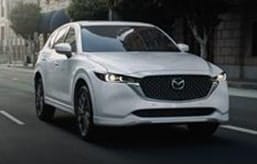
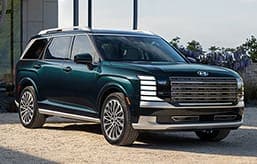
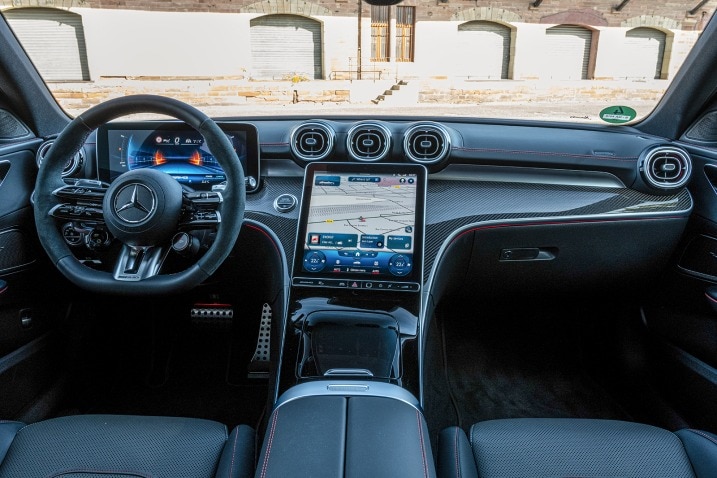
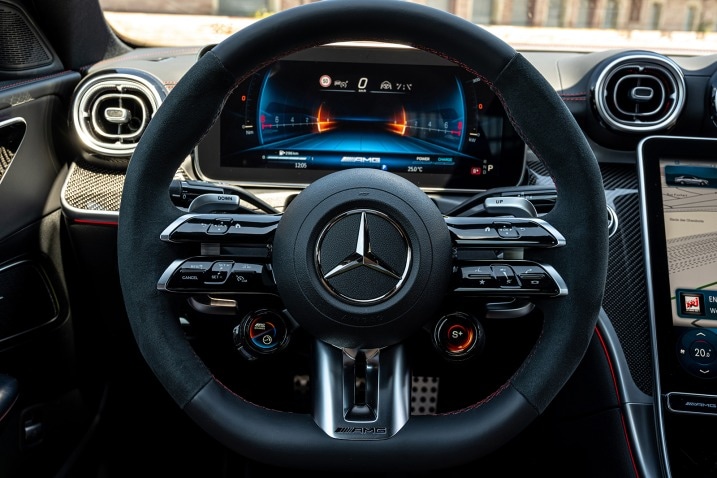

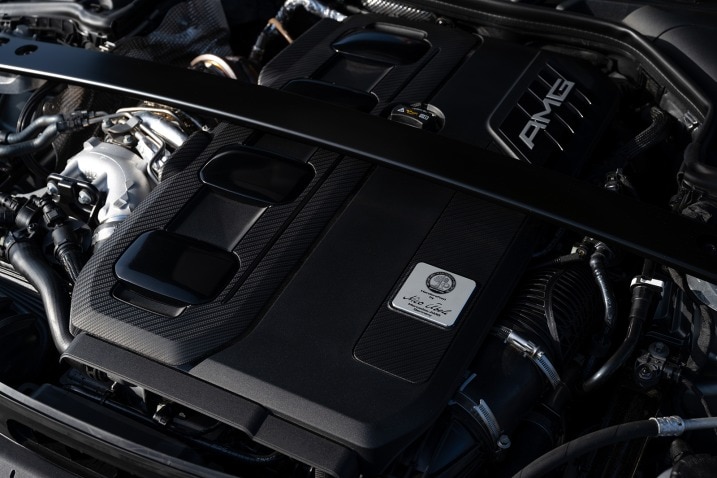
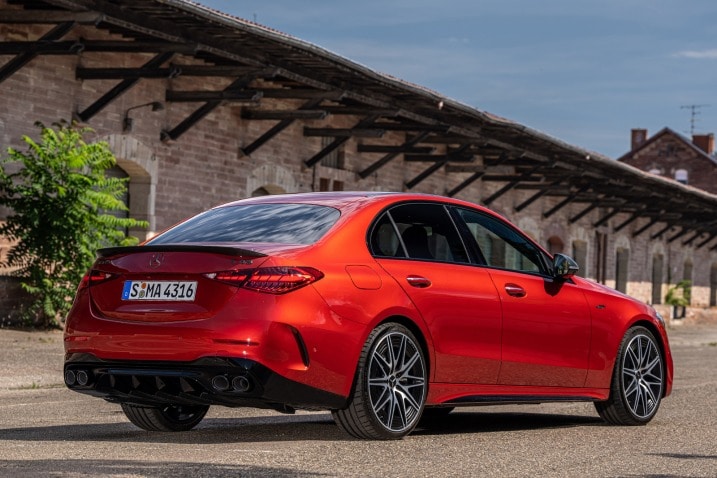
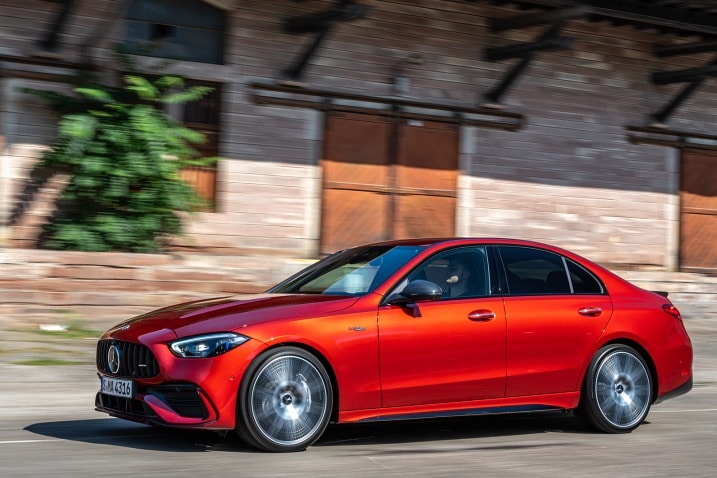
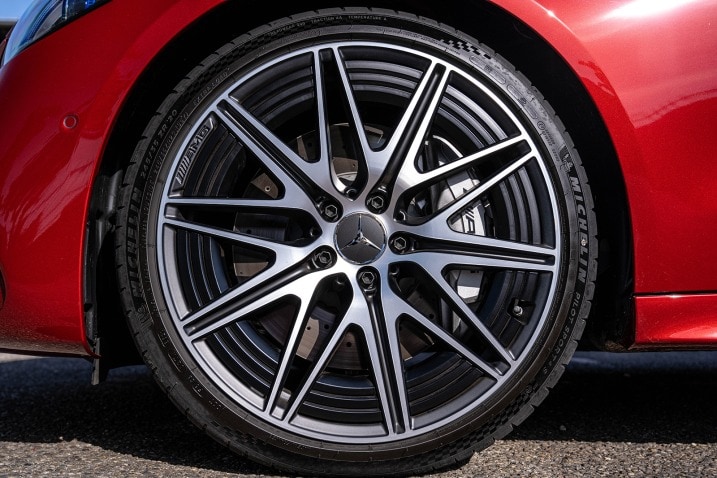
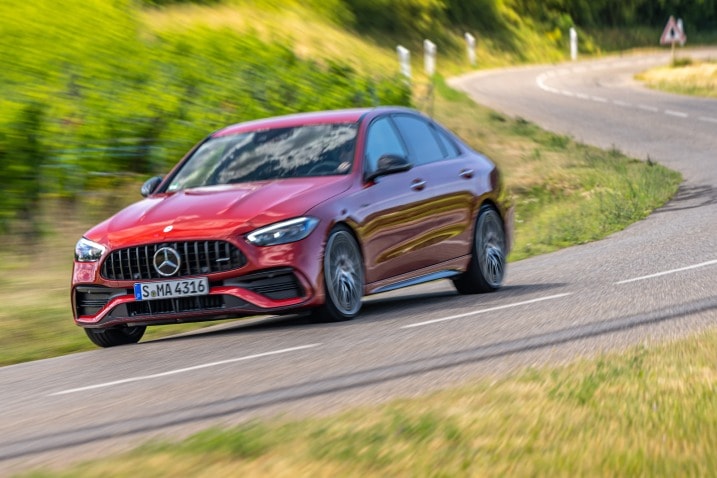
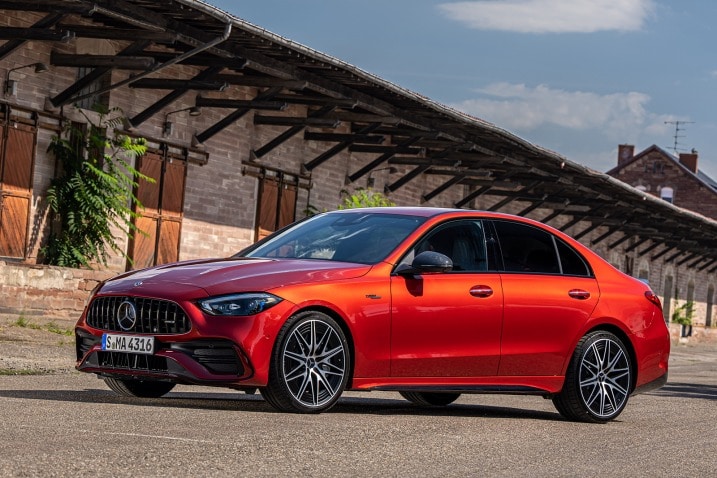
 by
by